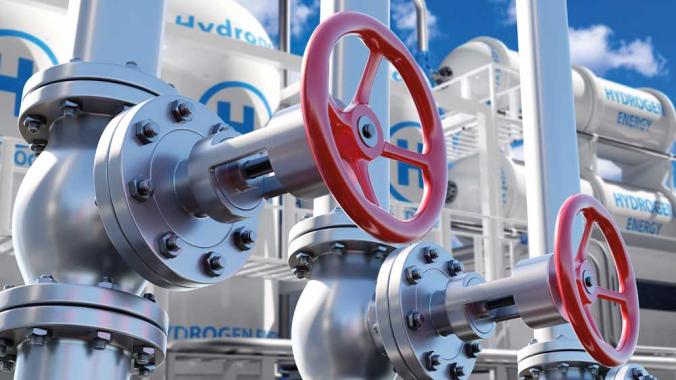The Machine Awakens
Cognitive maintenance and the end of failure
Introduction: The Rise of Cognitive Maintenance
Industrial maintenance has long grappled with unplanned downtime and high repair costs. Reactive approaches fix machines only after they fail, while preventive methods replace parts on strict schedules, often unnecessarily. Predictive maintenance introduced data-driven insights that detect failures in advance, yet human decisions are still required to schedule and carry out repairs. Now, a paradigm known as cognitive maintenance is emerging, where machines are active contributors to their own health. Cognitive maintenance goes beyond simple alerts by allowing assets to self-diagnose problems and dynamically respond, reducing failures and extending operational life. Instead of running until something breaks, machines adapt to stressors and coordinate with other systems to optimize performance.
Key Technologies Enabling Cognitive Maintenance
Cognitive maintenance depends on multiple convergent technologies that move beyond passive monitoring toward autonomous action, including cognitive digital twins, edge computing, proprioception and self-aware robotics, the Industrial Metaverse, and mission-driven maintenance. By weaving these elements together, cognitive maintenance represents a new way of ensuring industrial reliability, cost-effectiveness, and long-term sustainability.
Traditional digital twins are passive digital copies of physical assets. They can reflect current conditions and provide analytics but rarely have the capacity to learn or evolve. Cognitive digital twins continuously update themselves by assimilating new sensor data, maintenance records, and operator feedback. They use this knowledge to optimize how a physical asset operates and predict maintenance needs.
Rather than simply sending alerts to human technicians who then plan repairs, cognitive twins autonomously initiate interventions and adjustments. While predictive maintenance focuses on detecting early signs of failure, cognitive maintenance takes a broader approach.
By combining AI with engineering expertise and real-time operational context, it allows the system to decide whether a machine should be serviced immediately or can safely continue functioning, thereby aligning maintenance decisions with business objectives. Because these twins can process large volumes of sensor readings at remarkable speed, they help avoid premature part replacements and catastrophic breakdowns. As a result, industries benefit from a new standard of reliability and cost savings.
Cognitive digital twins represent the unification of three traditionally separate domains: information technology for data management, operational technology for on-the-ground control, and engineering technology for the mechanical and design aspects of assets. By blending these domains, cognitive twins unlock real-time insights that go beyond flagging issues. These intelligent coordinators orchestrate maintenance activities, adapt machine behaviour, and maximize lifespan without the constant oversight of human technicians.
Edge computing contributes to cognitive maintenance by enabling instantaneous data processing at the asset level. In scenarios where a few milliseconds of delay could be critical, local processing capacity allows immediate adjustments,especially important for remote or high-risk applications. By reducing latency, machines can better self-regulate, halt operations if a serious fault is developing, or shift workloads to other systems in real time.
Proprioception and self-aware robotics expand on these capabilities by giving machines something analogous to a biological sense of muscle tension or joint stress. Embedded sensors within mechanical components can feel slight vibrations, detect small cracks, and sense wear before it escalates. The machinery autonomously responds, applying less force, distributing loads more evenly, or signalling that a part needs minor service before it fails completely. In high-stress industrial environments, this capacity for internal awareness saves both time and money.
The Industrial Metaverse provides immersive digital environments. By combining real-time data, historical records, and AI-driven simulations, this virtual ecosystem allows both machines and humans to practice responding to various failure modes.
Maintenance strategies can be tested and refined in a setting mirroring actual operations without risking real-world downtime or damage. This approach encourages experimentation and rapid innovation in maintenance practices.
Another advancement is mission-driven maintenance, where AI systems decide the best time for interventions based on overall operational priorities. If a facility is running at peak capacity, non-critical maintenance tasks can be postponed, while assets with higher risk of serious failure receive immediate attention. Thus, essential production targets are met without neglecting safety or assets’ long-term health. By integrating all these technological elements into a unified framework, industries can transform maintenance from a reactive chore into an active, strategic function.
Human-AI Symbiosis in Cognitive Maintenance
Although cognitive maintenance increases machine autonomy, human expertise is indispensable. AI systems excel at large-scale pattern recognition and real-time data processing, but humans have contextual awareness and strategic reasoning that machines cannot replicate. Cognitive maintenance aims to augment, not replace, technical professionals. AI assists by sifting through massive amounts of sensor data and proposing optimal repair schedules, while technicians verify these recommendations and handle complex troubleshooting.
This collaborative relationship becomes a feedback loop in which human actions and decisions improve AI models over time. When a technician modifies a recommended intervention or overrules an AI-generated insight, the system tracks and learns from that event. Gradually, predictive models become more refined, reducing false alarms and bolstering trust. Maintenance personnel begin to focus on higher-level tasks, such as orchestrating machine interactions, training AI systems, and ensuring automated suggestions do not compromise safety or ethical considerations.
Human intuition is particularly valuable for risk assessment and big-picture planning. Although machines can analyse data quickly and efficiently, only human operators can account for nuances such as emerging regulations, environmental impacts, and organizational strategies. Rather than executing countless repetitive checks, workers become supervisors, strategists, and mentors to intelligent systems. Together, human and machine intelligence form a resilient maintenance ecosystem capable of responding to unexpected challenges.
Case Studies: Cognitive Maintenance in Action
In manufacturing, an automotive plant applied AI-driven predictive models to robotic welders. Traditionally, robots kept working until scheduled maintenance or until a breakdown. With self-learning software, the machines began to detect wear, vibrational anomalies, and sensor readings that hinted at impending malfunctions. Production downtime decreased by a notable margin, and part replacements were timed more accurately, leading to cost savings, higher-quality welds, and fewer reworks.
In the transportation sector, a European rail operator equipped its rolling stock with AI-based monitoring systems. Real-time data on braking temperatures, axle stress, and wheel conditions allowed proactive interventions to be integrated into operational schedules. Maintenance tasks that previously occurred only during periodic inspections were now triggered whenever the data indicated an elevated risk.
The rate of in-service failures dropped significantly, improving reliability and passenger safety. The operator also observed better scheduling efficiency and optimized rolling stock usage.
In the energy sector, wind farms have embraced cognitive maintenance through AI-powered blade and turbine monitoring. Rather than adhering to fixed service intervals, turbines collect continuous data on wind conditions, vibration levels, and overall performance. They then automatically adjust blade pitch or rotational speed to reduce stress during turbulent weather. This helps prevent catastrophic mechanical failures, increases energy generation, and lowers maintenance costs. Operators have reported impressive improvements in annual power output and component longevity.
These examples illustrate the tangible benefits of combining AI-driven analytics, cognitive digital twins, and autonomous interventions. Across diverse applications, industries gain safer, more efficient, and more proactive approaches to maintaining complex systems.
Challenges and the Future of Cognitive Maintenance
Despite its promise, cognitive maintenance faces several barriers. One challenge lies in AI explainability. Many machine-learning models behave like “black boxes,” generating recommendations without giving clear rationales. Maintenance professionals may be reluctant to trust or act on AI suggestions they do not fully understand. Developing interpretable models and user-friendly interfaces is thus essential to broaden adoption.
Cybersecurity is another pressing issue. As machines become more interconnected and autonomous, the risk of malicious attacks increases. Protecting sensitive sensor data, preventing unauthorized access to operational controls, and ensuring system integrity demand robust, adaptive cybersecurity measures. Strategies such as encrypted data transmission and AI-driven intrusion detection are useful, but this is a constantly evolving field.
Legacy systems also pose difficulties. Many industries rely on older infrastructures with limited connectivity or outdated sensors.
Transitioning to cognitive maintenance involves significant investments in hardware upgrades, software platforms, and staff training. Workforce culture must shift to embrace AI-driven insights and new procedures. Companies who navigate these changes will position themselves for significant performance gains, outpacing those unable to adapt.
Looking to the future, advancements in computing will play a central role. Edge computing is already making machine-level intelligence more responsive, especially in remote environments. Emerging technologies such as quantum computing could vastly accelerate the processing of large datasets, unlocking near-instant predictive analytics. As these innovations mature, cognitive maintenance may evolve from its current emphasis on fault prediction into a realm of fully self-preserving and self-optimizing assets.
Conclusion
Cognitive maintenance transforms industrial reliability by empowering machines to anticipate, adapt to, and prevent their own failures, marking a decisive move away from human-led, reactive strategies towards ecosystems of autonomous, intelligent systems capable of self-preservation. However, human expertise remains vital in overseeing these operations. Technicians and engineers must ensure AI systems remain grounded in practical realities, ethical standards, and strategic objectives. The result is a symbiotic relationship where machines handle data-heavy diagnostics and routine adjustments, while people focus on complex problem-solving and broader coordination.
As industry moves toward greater autonomy and intelligence, cognitive maintenance will play a defining role in shaping the future of asset management. Over time, self-learning machines capable of continuous evolution will redefine the limits of what industrial systems can achieve. The journey has begun, and those who embrace cognitive maintenance today stand to gain a competitive edge in operational resilience, efficiency, and technological leadership.
AI Meets Engineering:
A New Era of Maintenance The fusion of cognitive digital twins, AI, and human expertise is reshaping industries—machines don’t just report problems, they solve them autonomously.
Machines That Think: The Rise of Cognitive Maintenance
From simple monitoring to self-preservation, cognitive maintenance integrates awareness and adapts in real-time, ensuring machines don’t just work—they evolve.
From Breakdown to Brilliance
For decades, maintenance meant fixing after failure. Then came prediction. Now? Machines think, decide, and self-optimize, redefining industrial reliability forever.
AI Meets Engineering: A New Era of Maintenance
The fusion of cognitive digital twins, AI, and human expertise is reshaping industries—machines don’t just report problems, they solve them autonomously.
From Tron to Reality: The Rise of Self-Preserving Machines
Once a vision of sci-fi, Tron’s digital frontier is now industrial reality—where machines no longer wait for failure but predict, adapt, and self-preserve. Cognitive maintenance is the bridge between virtual intelligence and real-world autonomy.
Robots with a Sixth Sense
Industrial watchdogs are here. Self-aware, AI-driven inspection bots scan, predict, and act—keeping industries running without human intervention.
From Thought to Action: Robots as the Embodiment of Cognitive Intelligence
Assets will no longer wait for human fixes. Autonomous, AI-powered systems will monitor, repair, and self-optimize before problems arise.
Machines That Heal Themselves
Forget downtime. AI-driven self-repairing machines use proprioception and adaptive intelligence to detect damage and fix themselves—before failure even begins.
Text: Prof. Diego Galar, Prof. Ramin Karim, Prof. Uday Kumar Photos: Shutterstock













